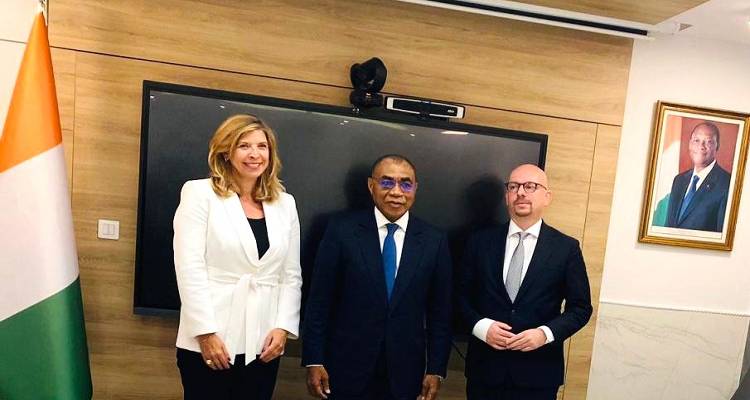Production of iron ore fell in 2009 for the first time in seven years, but trade in this raw material, driven by demand from China, nevertheless increased last year, The Iron Ore Market 2009-2011 reports.
p>Production of iron ore fell in 2009 for the first time in seven years, but trade in this raw material, driven by demand from China, nevertheless increased last year, The Iron Ore Market 2009-2011 reports.
The report is published by the UNCTAD Trust Fund on Iron Ore Information in cooperation with the Sweden-based Raw Materials Group.
World production of iron ore fell by 6.2 per cent in 2009 to 1.588 bn tonnes, the report reveals. Output decreased in most countries, with a few notable exceptions such as Australia and South Africa. Chinese production figures came to 234 mn tonnes (Mt) in 2009 on a "comparable grade" basis. ("Comparable grade" means that the iron content of the ore is of the same magnitude as the world average of 63-64 per cent.) China by any measure used to be the world's largest producer of iron ore, but now occupies fourth place after Australia (394 Mt), Brazil (300 Mt), and India (257 Mt).
Despite the global recession, iron-ore trade climbed to a record level of 955 Mt, in 2009, up 7.4 per cent from the previous year. The increase was the result of higher Chinese imports, driven by growing demand there, combined with a fall in Chinese domestic production, the report says.
Australia is the largest exporting country: in 2009 it sent 363 Mt overseas, a 17 per cent increase. Exports from Brazil decreased by 3 per cent to 266 Mt. India, at 116 Mt, was the third-largest exporter. Seaborne iron-ore trade is estimated to have increased by 11 per cent in 2009, to 890 Mt. China is by far the largest importer of iron ore, accounting for two-thirds of world imports. Despite the recession, its intake of ore climbed by 41 per cent in 2009, to 628 Mt.
The annual benchmark negotiation process for prices ended unsuccessfully in early 2010, and a quarterly "semi-negotiated" price is now the norm, the study reports. It says this new pricing model has brought uncertainty to the iron ore market and has reduced transparency. Prices are no longer "announced" as they used to be, through press releases and media reports. The report says that published spot price indices are not fully reliable.
The three largest iron-ore companies, Vale, Rio Tinto, and BHP Billiton, together controlled 35 per cent of total iron ore production and 61 per cent of total seaborne trade in iron ore in 2009, the report says. The Brazil-based Vale is still the world's largest producer, but its position has eroded from 17.3 per cent of the market in 2008 to 16.0 per cent in 2009. The trend towards corporate concentration will most likely continue in 2010 as Vale tries to recapture market share, the study predicts.
Chinese domestic production, which has contracted in recent years, is likely to fall further as a result of widespread mine closures, the report indicates.
It notes that the country likely will pay more for the ore it imports, as the new pricing system gives the major iron-ore producers more leverage. The study describes the international steel industry (the main customer for iron ore) as "fragmented" and maintains that the industry does not act in a coherent manner, thus allowing the three largest iron ore producers to exercise considerable control in what now amounts to a "sellers'" market.
New iron ore mining capacity taken into operation in 2009 reached almost 75 Mt globally, the report notes. And more than 685 Mt of new production capacity may come on stream between 2010 and 2012. Steel producers are increasingly investing in "captive" mines - mines they own themselves - both for iron ore and coal, the study says.
It predicts that the world iron-ore market will be characterized by tight conditions over the short term, but that supply will gradually catch up with demand and prices will decline from current levels, although they will stay higher than in the period before 2008.
The Trust Fund Project on Iron Ore Information was started in June 1989 to continue the collection and dissemination of information on iron ore that formerly had been carried out by the Association of Iron Ore Exporting Countries (APEF). The Trust Fund is administered by the Secretariat of UNCTAD. It is financed by income from the sale of its publications and by contributions from the governments of Brazil, Canada, Sweden, and the United States.
Since 2002, the reports of the Trust Fund have been prepared by the UNCTAD Secretariat in cooperation with the Raw Materials Group of Sweden.
For information about the Raw Materials Group, please consult its website at www.rmg.com




































